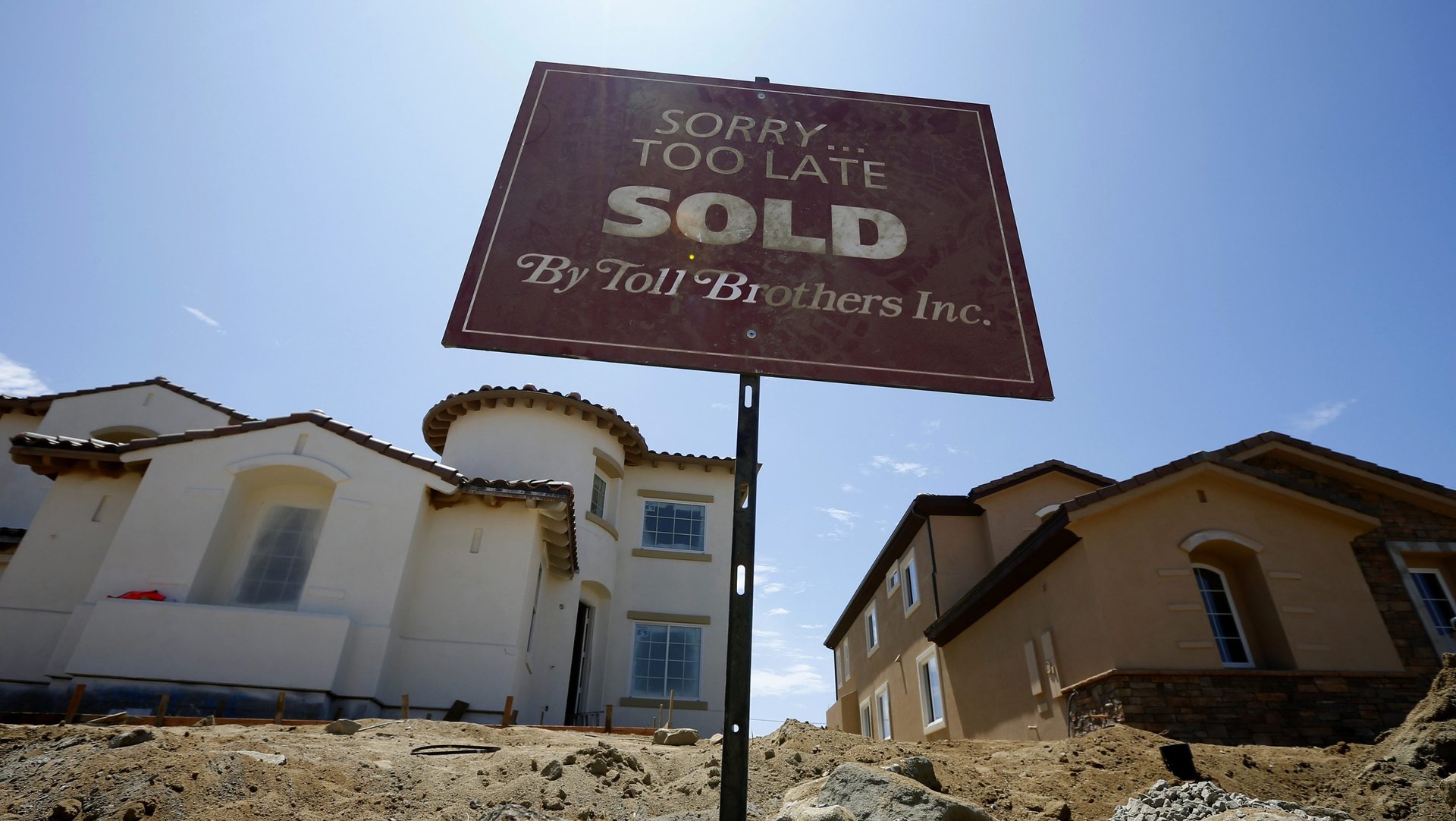As the market for high-end American homes grows, more affordable options shrink
New home sales are a useful litmus test for the health of an economy, because the decision to build reflects demand for big-ticket purchases, and their construction involves builders, planners, and an array of other workers.


New home sales are a useful litmus test for the health of an economy, because the decision to build reflects demand for big-ticket purchases, and their construction involves builders, planners, and an array of other workers.
In the US, new home sales are recovering steadily at the high end of the market, while more affordable options continue their long decline dating back to the housing crash. Earlier this year, the number of homes sold for $500,000 or more rose above the number sold for $200,000 or less. A decade ago, more than three times as many sub-$200,000 homes were sold as $500,000-plus properties. (The median price of a new home was around $314,000 in the first half of this year.)
New homes, built with modern technology and infrastructure, are often more expensive to buy than existing homes. But a post-recession rise in new home prices comes, incongruously, at a time when existing home sales are stagnating. This is partially because baby boomers are reluctant to move out of multiple-bedroom homes even after their children have left. This leaves (often poorer) entry-level buyers with fewer options, so they look more to new homes instead.
President Donald Trump’s immigration restrictions and import tariffs have created a shortage of construction labor and higher material prices. This also contributes to pricier new homes.
At the same time, banks are making it easy for buyers to stretch their budgets, with mortgage rates near historic lows. Still, home ownership rates among young people continue to fall (pdf), suggesting that no matter how low mortgage rates go, high prices matter more.